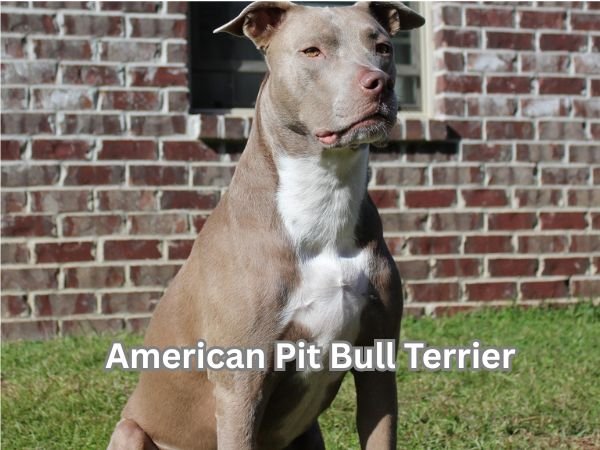
The American Pit Bull Terrier is a breed full of strength, intelligence, and unwavering loyalty. Despite often facing unfair stereotypes, these dogs are known for their affectionate nature and strong bonds with their families. However, their powerful physique and natural instincts mean that effective training is crucial to bring out the best in their behavior. Understanding Pit Bull training not only helps shape a well-mannered companion but also strengthens the special connection between owner and dog.
In this article, we’ll explore 5 powerful training secrets that can unlock your American Pit Bull Terrier’s full potential, helping you navigate common challenges and embrace the breed’s unique traits with confidence.
Understanding the American Pit Bull Terrier
The American Pit Bull Terrier is a strong, loving, and intelligent dog that often wins the hearts of pet owners. If you’re thinking about bringing one into your home, it’s important to know what makes this breed special and how to care for them properly.
A Bit About Their History and Personality
Originally bred for their strength and agility, American Pit Bull Terriers have always been hardworking dogs. Over time, they’ve become cherished family pets known for:
- Loyalty: They form strong bonds with their owners and are often very protective.
- Intelligence: Quick learners who enjoy mental challenges.
- Energy: These dogs are active and playful, making them great companions for active families.
Debunking Myths About Aggression
Many people assume Pit Bulls are naturally aggressive. This is not true! Like any dog, their behavior depends largely on how they are raised and treated. Here are some facts:
- Aggression is not a breed trait but usually a result of poor training or neglect.
- American Pit Bull Terriers are often gentle and loving with proper care.
- They respond well to positive training that builds trust rather than fear.
The Importance of Socialization
Pit Bull socialization is key to raising a well-behaved dog. Early and consistent socialization helps them get used to:
- Other dogs of all sizes.
- Different people, including children and strangers.
- New environments, noises, and experiences.
Socialized Pit Bulls are more confident, friendly, and less likely to show fear or aggression.
Meeting Their Exercise Needs
American Pit Bull Terrier exercise needs are high. These dogs thrive on plenty of regular activity to stay happy and healthy. Consider:
- Daily walks or runs to burn off energy.
- Playtime with toys or games like fetch.
- Mental activities, such as obedience training or puzzle toys.
Without enough exercise, these intelligent dogs can become bored and develop unwanted behaviors.
Owning an American Pit Bull Terrier can be incredibly rewarding. With love, patience, and the right care, you’ll have a loyal and joyful companion by your side. Remember to socialize them early, keep them active, and treat them with kindness—they’ll show you their best self every day.
Secret 1: Use Positive Reinforcement as the Foundation
Training your American Pit Bull Terrier with positive reinforcement is one of the most effective ways to shape their behavior. This breed is known for being smart, energetic, and eager to please, so using rewards to motivate them works exceptionally well.
Why Positive Reinforcement Works for Pit Bulls
Pit Bulls thrive on praise and encouragement rather than harsh discipline. Positive reinforcement builds trust and strengthens the bond between you and your dog. When a Pit Bull understands that good behavior leads to rewards, they are more likely to repeat those behaviors consistently.
Practical Ways to Use Positive Reinforcement
- Treats: Small, tasty snacks can be given immediately after your dog performs a desired action. For example, when your Pit Bull sits calmly or follows a command, offer a treat as a clear “thank you.”
- Praise: Use a happy, upbeat tone and gentle petting to let your dog know they’ve done well. Simple words like “good boy” or “well done” can mean a lot.
- Toys: Some Pit Bulls love play, so rewarding them with a favorite toy or a quick game of tug can be a powerful motivator.
Importance of Timing and Consistency
To make positive reinforcement work best:
- Reward Immediately: Give the treat or praise right after the good behavior so your Pit Bull understands exactly what earned the reward.
- Be Consistent: Always reward the behavior you want to encourage and avoid giving treats for unwanted behavior. This consistency helps your dog learn faster.
- Use Patience: Training takes time. Celebrate small successes and keep sessions short to maintain your dog’s focus.
By using positive reinforcement training, you help your Pit Bull develop good manners and obedience in a fun, trust-building way. This reward-based dog training method creates a happy, confident dog who looks forward to pleasing you every day.
Secret 2: Establish Consistent Rules and Routine for Your American Pit Bull Terrier
When it comes to raising a happy and well-behaved American Pit Bull Terrier, consistency is key. These dogs thrive when they know what to expect. Setting clear rules and sticking to a routine helps your Pit Bull feel secure and understand how to behave. Let’s dive into why consistent dog training and a steady routine make such a big difference.
Why Consistency Matters
American Pit Bull Terriers are smart and eager to please. But if the rules change from day to day, it can confuse them. Imagine if one day you let your dog jump on the couch, and the next day you say no. That mixed message can make it harder for your Pit Bull to learn good habits.
- Consistent commands help your dog know exactly what you want.
- Following household rules every day builds trust and respect.
- Predictable routines reduce stress and unwanted behaviors.
Setting Clear Expectations
To keep your Pit Bull on the right track, you need to be clear about what’s okay and what’s not. This means everyone in the household should follow the same rules and use the same commands. For example:
- Decide whether your dog is allowed on furniture and stick to it.
- Use simple, clear commands like “sit,” “stay,” and “come.”
- Reward good behavior with praise or treats right away.
Make Training a Daily Habit
Short, frequent training sessions work best for American Pit Bull Terriers. These dogs have lots of energy but can lose focus if training goes on too long. Aim for:
- 10 to 15 minutes of training, two to three times a day.
- Fun and positive sessions that keep your dog engaged.
- Practicing commands and tricks in different places and situations.
Tips for a Successful Training Routine
- Keep sessions consistent—same time and place if possible.
- End on a positive note with a reward or playtime.
- Be patient and stay calm, even if your dog doesn’t get it right away.
By establishing consistent rules and a steady training routine, you’ll help your American Pit Bull Terrier grow into a well-mannered, happy pet. Remember, consistency is the secret to success!
Secret 3: Prioritize Early and Ongoing Socialization for Your American Pit Bull Terrier
When it comes to raising a happy and well-behaved American Pit Bull Terrier, socialization is key. Starting early and keeping it consistent throughout your dog’s life can make a huge difference in their behavior and temperament. Let’s dive into why socialization matters and how you can practice it with your Pit Bull.
Why Socialization Matters for Pit Bulls
Pit Bulls are known for being loyal and loving companions, but like all dogs, their behavior is shaped by the experiences they have. Proper socialization helps prevent fear and aggression, allowing your dog to be calm, friendly, and confident in many situations.
By exposing your Pit Bull to different people, animals, and environments, you help them learn what’s safe and normal. This reduces stress and fear, which are common triggers for aggression.
Puppy Socialization: The Best Time to Start
The early weeks of a puppy’s life are a critical window for socialization. From about 3 weeks to 14 weeks old, your Pit Bull puppy is like a sponge, soaking up new experiences.
Here’s how to make the most of puppy socialization:
- Meet New People: Introduce your puppy to men, women, children, and people of different appearances.
- Interact with Other Dogs: Arrange playdates with vaccinated, friendly dogs.
- Explore Environments: Take your puppy to parks, busy streets, and pet-friendly stores.
- Handle Regularly: Gently touch their paws, ears, and mouth to prepare them for vet visits and grooming.
Ongoing Socialization Through Adulthood
Socialization isn’t just for puppies. Adult Pit Bulls also benefit from positive experiences that reinforce good behavior.
Tips for ongoing socialization:
- Keep Meeting New Faces: Continue visits with neighbors, friends, and new acquaintances.
- Introduce New Animals Slowly: If there’s a new pet at home or visits to kennels, take it step by step.
- Try New Experiences: Car rides, different walking routes, and exposure to sights and sounds help keep your dog adaptable.
- Use Positive Reinforcement: Reward calm, friendly behavior to encourage confidence.
How Socialization Helps Prevent Aggression in Pit Bulls
Fear and uncertainty can lead to aggression in any dog, including Pit Bulls. Socialization teaches your dog that new things are okay, reducing their stress and the chance they’ll react aggressively.
Remember, a well-socialized Pit Bull grows into a calm and loving companion who enjoys meeting new friends—both human and furry.
Secret 4: Provide Ample Physical Exercise and Mental Enrichment for Your American Pit Bull Terrier
If you have an American Pit Bull Terrier, you know they are full of energy and love to stay busy. To keep your Pit Bull happy and healthy, giving them enough physical exercise and mental stimulation is key. Let’s explore why this is so important and how you can make it fun for both of you!
Why Exercise Matters for Your Pit Bull
American Pit Bull Terriers are an active dog breed. They need at least 1 to 2 hours of exercise every day to burn off their energy. Without enough activity, they might get bored and develop bad habits like chewing or digging.
Fun Ways to Meet Pit Bull Exercise Requirements
Here are some activities that keep your Pit Bull’s body moving and their mind sharp:
- Hiking: Take your pup along on nature trails. The changing scenery and new smells make it exciting.
- Agility Training: Set up a simple obstacle course in your backyard or join a local class. This boosts their coordination and confidence.
- Playtime: Classic games like fetch or tug-of-war are perfect for channeling your dog’s energy.
Mental Enrichment for Dogs: Keep Their Brain Busy
Physical activity is only part of the puzzle. Pit Bulls benefit a lot from mental games that challenge their thinking and impulse control. Try adding these to your routine:
- Scent Work: Hide treats around the house or yard and encourage your dog to find them using their nose.
- Impulse Control Exercises: Teach commands like “wait” or “leave it” to improve focus and patience.
- Puzzle Toys: Interactive toys that hide treats or require solving simple puzzles can keep boredom at bay.
The Happy, Balanced Pit Bull
When you combine physical exercise with mental enrichment, your American Pit Bull Terrier will be healthier, calmer, and more well-behaved. You’ll enjoy a strong bond built through fun and training.
Remember, every dog is unique. Observe your dog’s energy levels and interests, and adjust activities to fit them. Your time and effort help your Pit Bull thrive — mentally and physically!
If you want your Pit Bull to be a happy family member, make daily play and learning a priority. After all, a tired and stimulated dog is a happy dog!
Secret 5: Customize Training to Your Pit Bull’s Personality
Every American Pit Bull Terrier is unique. While these dogs share many common traits, each one has its own personality, likes, and dislikes. When it comes to training, understanding your Pit Bull’s individual style can make all the difference. Personalized dog training isn’t just a buzzword—it’s the key to a happy, well-behaved pup.
Recognize Your Pit Bull’s Unique Motivation
Not all dogs learn the same way. Some Pit Bulls might love treats, while others respond better to playtime or affection. To train effectively:
- Watch what excites your dog the most.
- Does your Pit Bull’s tail wag faster when you hold a toy?
- Or do they perk up more at the sight of a favorite treat?
By tuning in to these clues, you can use rewards that truly motivate your dog.
Use Personalized Rewards
Different Pit Bull personality traits mean different rewards work best for each dog. Here’s how to tailor rewards:
- Play: If your dog loves chasing balls or tugging toys, use playtime as a training reward.
- Affection: Some Pit Bulls thrive on petting, cuddles, or happy voices.
- Treats: If food motivates your dog, find healthy snacks they can earn.
Switch up rewards to keep training fresh and exciting.
Watch for Signs of Stress or Boredom
Training sessions should be fun and positive, but sometimes your dog might show signs that something’s off. Look out for:
- Restlessness or lack of attention
- Panting or yawning (signs of stress)
- Turning away from you or ignoring commands
If you see these signs, pause or change the activity. Maybe your dog needs a break, or a different approach.
Adapt Your Training Methods
Be flexible and ready to adjust how you train based on your Pit Bull’s responses. Some tips include:
- Shorten training sessions if your dog loses focus.
- Use more interactive games if your dog prefers movement over sitting still.
- Combine different types of rewards to keep motivation high.
Remember, training is a two-way street. When you adapt to your dog’s needs, you build trust and deepen your bond.
Training your American Pit Bull Terrier in a way that respects their personality makes learning easier and more enjoyable—for both of you. Keep observing, be patient, and celebrate the small wins. Your customized approach will help your Pit Bull shine!
Bonus Tips and Common Challenges for American Pit Bull Terrier Owners
Owning an American Pit Bull Terrier (APBT) comes with lots of joy but also some unique challenges. These dogs are smart, energetic, and strong-willed, so understanding a few key points can help strengthen your bond and keep life smooth.
Handling Stubbornness and Strong Prey Drive
APBTs can be a bit stubborn at times. They love to chase, so their prey drive is high. Here’s how to manage it:
- Stay patient and consistent: Use short, clear commands and reward good behavior right away.
- Keep training sessions fun: Mix play and learn to keep your dog interested.
- Redirect their energy: Provide plenty of toys and games like fetch or tug-of-war.
- Leash and recall practice: Always work on reliable recall, especially in places with small animals.
Using Appropriate Training Tools
Training tools can help, but it’s important to stay kind and avoid causing fear:
- Avoid harsh methods: Never use pain or punishment. It hurts trust and can make issues worse.
- Consider mild tools: Some owners find gentle pinch collars useful if used carefully. Always learn proper techniques from a professional trainer.
- Positive reinforcement works best: Treats, praise, and play motivate your dog and create a strong bond.
Managing Public Perception and Social Settings
Pit Bulls sometimes get a bad reputation, but you can help change that by being a responsible owner:
- Keep your dog on a leash in public: This shows you’re in control and respectful of others.
- Socialize early and often: Introduce your dog to different people, places, and pets calmly and gradually.
- Be confident: People sense your energy. If you’re relaxed, your dog will be too.
- Educate others: Share your positive experiences and help others understand the breed better.
Owning an American Pit Bull Terrier can be deeply rewarding. With patience, kindness, and smart choices, your dog will grow into a loving and well-behaved companion. Remember, every challenge is a chance to build trust and enjoy your dog even more!
Conclusion: Bringing Out the Best in Your American Pit Bull Terrier
Training an American Pit Bull Terrier can be a rewarding journey filled with love, patience, and dedication. Let’s quickly recap the five secrets to success:
- Start Early: Begin training and socializing your pup from a young age.
- Be Consistent: Use clear commands and routines that your dog can understand.
- Positive Reinforcement: Reward good behavior with treats, praise, or playtime.
- Socialize Regularly: Help your dog get comfortable around people and other pets.
- Stay Patient: Remember, progress takes time and every dog learns at their own pace.
These five keys work best when combined with your commitment. Raising a happy and well-behaved Pit Bull takes time — but the bond you build along the way is truly worth it.
Why Start Early and When to Seek Help
The earlier you start training, the easier it is to guide your dog toward good habits. Puppies are like little sponges—they learn quickly and adapt fast. If you ever feel stuck or unsure, don’t hesitate to reach out to a professional trainer who knows the American Pit Bull Terrier well. They can provide personalized advice and support tailored to your dog’s needs.
Your Next Steps
- Share your training experiences with friends, family, or online communities. You might inspire others, and you could gain new tips.
- Explore training books, videos, or local dog classes focused on Pit Bulls.
- Contact trainers who specialize in American Pit Bull Terriers for expert guidance.
Remember, every successful journey begins with a single step. So start today and watch your American Pit Bull Terrier grow into the loyal, happy companion you always wanted.
FAQ
How do you train an American Pit Bull Terrier?
Start with basic commands like sit and stay. Use treats, praise, and short sessions. Be calm and consistent. Positive training builds trust fast.
Are American Pit Bull Terriers easy to train?
Yes, they are smart and eager to learn. With patience, positive rewards, and regular practice, Pit Bulls can be well-trained and obedient.
What is the best age to start training a Pit Bull?
Begin training as early as 8 weeks old. Puppies learn quickly. Early training helps avoid bad habits later.
How do you stop a Pit Bull from being aggressive?
Use calm commands and avoid yelling. Socialize early with people and other dogs. Reward calm behavior. Never punish with force.
Can Pit Bulls be trained to be friendly?
Yes, with early socialization and kind training, Pit Bulls become friendly and loyal. They respond well to love and consistency.




